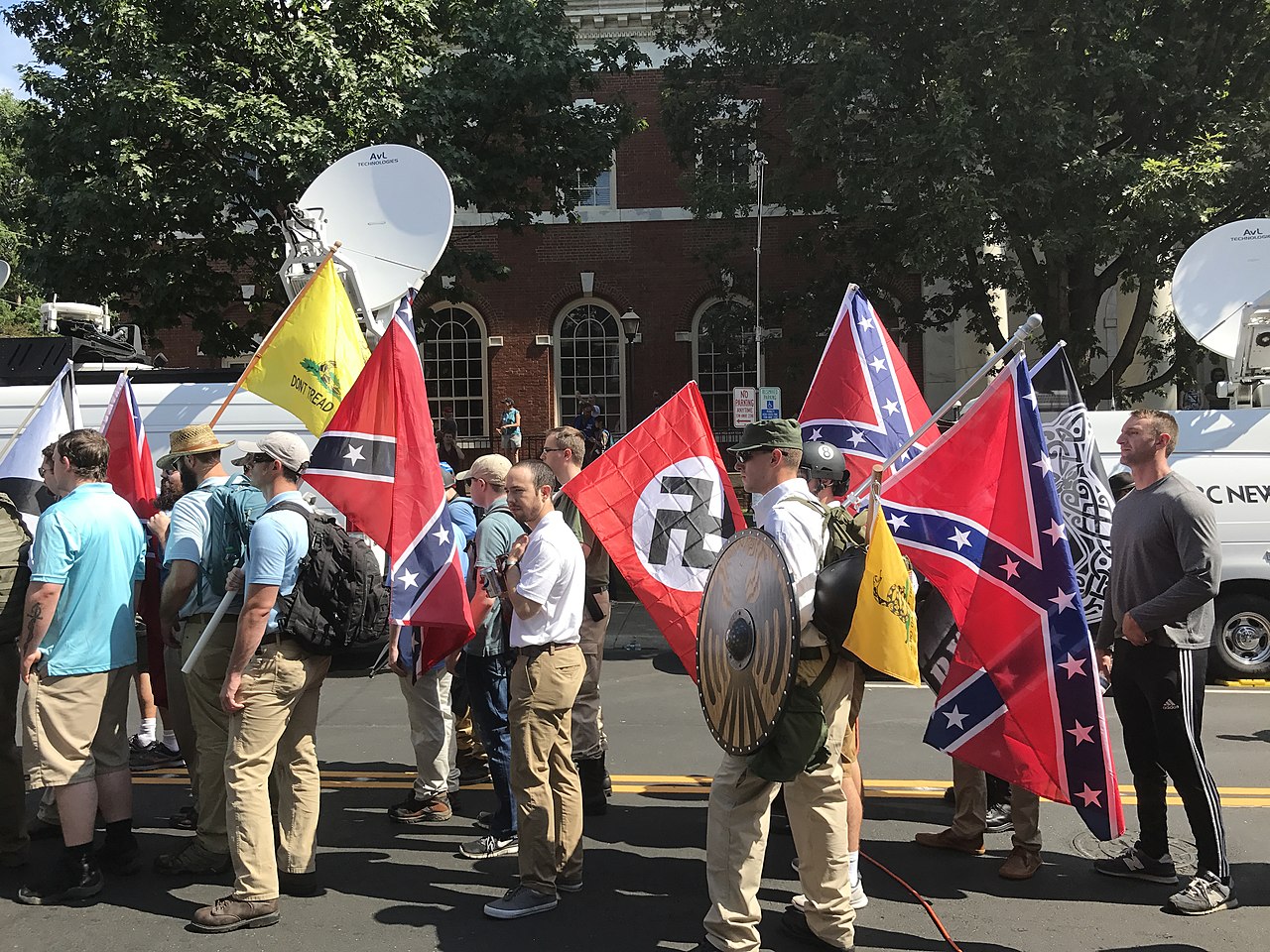How a New Administration Might Better Fight White Supremacist Violence
Addressing the threat will require working together with international partners and social media companies.

Published by The Lawfare Institute
in Cooperation With

Editor’s Note: This article originally appeared on Order from Chaos.
In the last four years, violence linked to white supremacy has eclipsed jihadi violence as the predominant form of terrorism in the United States. Beyond high-profile terrorist attacks in the United States like the 2018 Tree of Life synagogue and 2019 El Paso Walmart shootings, white supremacists have also tried to seize on the protests following George Floyd’s death to foment chaos.
President Trump himself has often downplayed white supremacist violence, but U.S. bureaucracies are slowly moving forward despite discouragement or indifference from on high. In 2019, the Department of Homeland Security (DHS) issued a new report that elevated the importance of white supremacist violence. In 2020, the State Department designated the Russian Imperial Movement (RIM), an ultranationalist white supremacist group, as a terrorist organization—the first time the State Department ever designated a white supremacist group as such. Such steps, however, are only the first of many that need to be taken.
What might a new administration do to more effectively target white supremacist violence?
One of the most obvious steps is to correct the resource imbalance between jihadi and white supremacist violence. Because jihadi violence was a dominant national security concern after 9/11, collection and action against the threat involved not only the FBI and DHS but also—and especially—intelligence agencies with an overseas focus as well as the military, among others. Even within the FBI and DHS, which primarily have a domestic mandate, far more personnel focused on jihadi violence. In part because of this resource allocation, suspected jihadi violence was far more likely to be preempted, countered with sting operations, and involve federal charges. Some of these resources need to move to counter white supremacist violence. Former FBI officer and terrorism expert Clint Watts calls for new laws, including making domestic terrorism a federal crime, formally designating domestic terrorism organizations as is done for international groups, and having the FBI director launch a national domestic terrorism “case” to allow more resources and information sharing. Although the specifics of any listings would be complex given First Amendment concerns, greater federal involvement is necessary as the groups and networks cross state, and even national, boundaries.
Ensuring police services and the U.S. military are free from the taint of white supremacy should be a high priority. Although the overwhelming majority of personnel in security agencies are hostile to white supremacy and other forms of extremism, white supremacists have proven able to recruit from these communities, greatly enhancing the potential risk they pose by giving the groups’ access to trained personnel and weapons. The military needs to systematically track and report on the presence of white supremacy in its ranks. Terrorism expert Heidi Beirich notes that military recruiters should consider establishing a tattoo database and developing mechanisms to investigate troubling social media posts.
Beyond government agencies, U.S. leaders need to incorporate social media companies as major players in the fight against white supremacy. The companies are taking positive steps on their own (Facebook, for example, recently disrupted the “boogaloo” movement on its platform, removing associated accounts and pages), but implementation is uneven, and they lack broader guidance. Platforms are more cautious with regard to white supremacists than they are with jihadis, fearing political backlash, even though the algorithms of at least some platforms favors inflammatory content from conservative accounts. In addition, these companies are global, and they need international agreements that enable them to operate more consistently across borders. Companies have tried, with some success, to coordinate their efforts via the Global Internet Forum to Counter Terrorism, but progress is often reactive and fitful.
Action overseas is another important step for fighting terrorism at home. Many U.S.-focused white supremacist networks today have global connections, and attacks like the Christchurch, New Zealand shootings inspired Americans to kill in the name of white power. By working with allies around the world, the United States can prevent the groups and cells from helping each other, as it does already with jihadi organizations. In addition, a global effort can reveal otherwise unknown individuals who have ties to extremists back at home. The designation of RIM is a good first step, but there are many more white supremacist organizations that could and should be designated. Such a designation would also criminalize the Americans who support these groups, as is true for Americans who help ISIS or another currently designated terrorist group.
In addition to strengthening cooperation against white supremacists overseas, the U.S. government should take the lead in fighting states that exploit their extremism, notably Russia. The Russian regime and its supporters have loose ties to a number of white supremacist groups, particularly in Europe. In addition, Moscow conducts regular information operations to polarize U.S. sentiment, sow discord, and weaken the legitimacy of U.S. institutions, making it easier for white supremacists to recruit.
The final step is political. A new president should push to delegitimize not only white supremacist violence, but also the voices that openly support it—there are not “very fine people” on both sides. The president should push Republican leaders to disavow any connections to white supremacists, as the party used to do in the past, when national leaders like President George H.W. Bush declared neo-Nazi and former KKK leader David Duke a “charlatan” and called for him to be rejected by voters when he ran as the Republican candidate for governor in Louisiana in 1991. Having mainstream leaders on both sides of the aisle condemning white supremacism also ensures the bureaucracies are engaged. Under Trump, as one former senior FBI agent noted: “There’s some reluctance among agents to bring forth an investigation that targets what the president perceives as his base. It’s a no-win situation for the FBI agent or supervisor.”
Such steps will not end the threat of white supremacy, and indeed if President Trump loses violence might spike. In the long-term, however, prioritizing white supremacist terrorism and acting vigorously to disrupt it will limit the danger.





